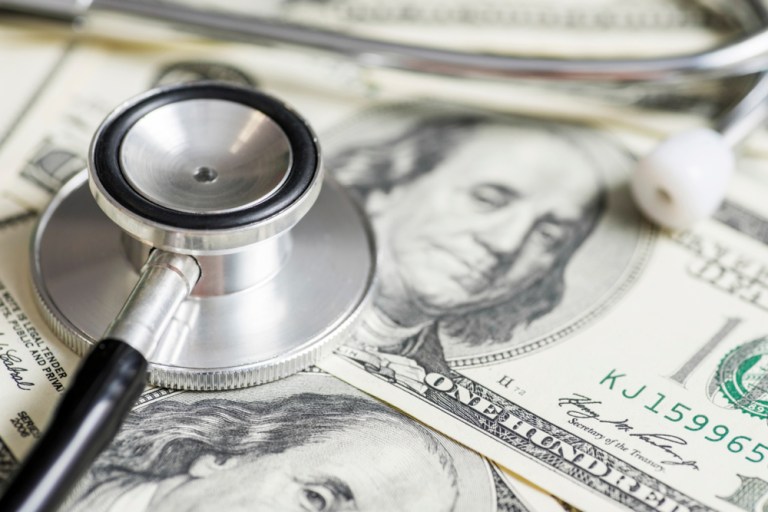
There exists an uncomfortable intersection between the public service of healthcare and the pursuit of profit.
We’re in the midst of another recession. As the economy reopens, many of us are gearing up to go back to the doctor, to get the tests and treatments we’ve put off for so long.
The question remains: How to pay for it all?
Doctors, and eventually, collectors must chase down patients who may be facing financial hardship. At times, daunted by what it all may cost, patients may not even make the appointments in the first place.
To that end, payments solution firm Flywire said last week that it has added new features to its healthcare payments offerings — with a nod toward customized installment plans that can help patients pay what they can afford and take care of health needs at the same time.
Among the trio of new features, providers can offer pre-and post-service payment plans, which leverage data and advanced analytics to determine patient affordability.
“It’s helping the hospitals design their pricing in such a way that is both palatable and affordable to the consumer,” John Talaga, executive vice president and general manager of Flywire’s healthcare operations, told Karen Webster in a recent interview.
Flywire also has debuted single sign-on (SSO) and telehealth payments, which allow patients to tap into Flywire’s payments services through MyChart via the Epic App Orchard.
MyChart exists as the patient’s point of access with the provider and allows patients to schedule appointments, view their records and make payments.
Talaga said the enhancements to its healthcare platform come as “telehealth has exploded. It’s become an urgent health care need” as the pandemic has taken root.
And in terms of mechanics, he said the company’s existing app, Secure Checkout, now lets Flywire’s healthcare provider clients expand payment offerings as telehealth services are rendered (telemed payments are typically one-time in nature and are tendered at the time of service).
“Secure Checkout’s been out there for a while to help with embedded payments in MyChart, keeping credit card information off the network,” he told Webster.
Now, he said, telehealth payments through Epic can use the same payment services that had been extant for in-person visits.
Beyond the current embrace of telemedicine, it is the looming eventuality of in-person healthcare that might spur healthcare providers to re-examine patients’ capacity to pay and whether personalized payment options should be offered.
As Talaga noted, healthcare is “opening up” across the country, and many hospitals and providers have restarted elective procedures.
“The big question is when patients will be ready to come back,” said Talaga. “Providers are expecting that there will be a ‘rush’ especially as deductibles are reset.”
And in an age where financial hardship comes hand in hand with a public health crisis, said Talaga, Flywire has seen a “big boost” in the use of payment plans — up 30 percent year over year. In addition, the company has seen a 20 percent increase in digital payments in general.
“The payment plan is showing up as a preferred way for patients to make payments right now,” he said.
Providers, he said, are offering payment plans through Flywire as a strategic tool to reach out to patients, encourage them to get the care they need, and craft affordable options.
He noted that setting up pre-service payment plans — collecting an initial payment and setting the installment plan upfront — also leads to stickier relationships between patients and providers.
“It’s proven by a lot of data that if a patient makes a single payment prior to their service, they’re 70 percent likelier to pay their balance,” Talaga said.
Pre-service plans also have the beneficial impact of reducing cancellations because patients have already committed financially to the healthcare scheduled to be delivered.
Payment plans also have a positive impact for the providers themselves, said Talaga.
Although healthcare may be regarded as “recession proof” (past a certain point, healthcare is a need, not a luxury), it’s been impossible to keep cash flow healthy when offices have been shuttered and patients have been under lockdown.
Economic uncertainty has also spurred patients to save money and conserve cash flow. That’s especially important where, as PYMNTS research found, roughly 60 percent of consumers live paycheck to paycheck.
Leveraging advanced analytics and pre-service plans, offered Talaga in an illustrative example, means that a $3,000 bill can be divvied into 12 $250 monthly payments. It also means that analytics can look at an individual’s financial situation and determine whether they qualify for financial assistance or charity care and immediately apply discounts to lower what’s ultimately owed. Payment plans can also be altered to take into account life-altering events, such as job losses.
Looking Ahead
As we emerge from the shadow of the pandemic, predicted Talaga, flexible payments will become a key competitive advantage for healthcare providers.
“The most direct contact a hospital has with a patient after services have been rendered is their bill,” Talaga told Webster. “Just sending them a paper statement … or just sending an email and saying, ‘You owe this balance,’ is no longer considered acceptable.”
“There’s a whole interaction and engagement experience you have to have with the patient, from pre-service to post-service,” he said.